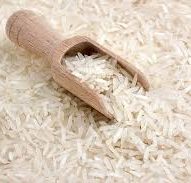
He was born in Kronach, Germany, on October 4, 1472.


His real surname differs according to the sources and can be Sünder, Sunder or Sonder; later the name of the native city of him is added like last name.


After Albrecht Dürer, he is perhaps the best known and most important of the German Renaissance.


It is unknown where he made his apprenticeship, it is probable that he knows the German teacher Matthias Grünewald, from whom he possibly receives lessons.


Grünewald practices in Bamberg and Aschaffenburg, with Bamberg being the capital of the diocese where Cranach lives.


The first written reference to his existence is in the German city of Wittenberg in the year 1504, in which the local prince gave him a certain salary for his work.


It is further known that he owns a house in Gotha and that Barbara Brengebier is his wife.


Commissioned by these, he paints numerous biblical and mythological scenes, sensual nudes, something totally new in German painting.


In 1508 he paints various altar pieces for Wittenberg Castle, competing with Albrecht Dürer and Hans Burgkmair, his contemporaries.


His friendship with Martin Luther is reflected in some way in his work, expressing in his paintings part of the reformist sentiments in Germany, in which Protestantism is propagandized.


Cranach presses are used by Luther.


Above all, he was a great portraitist, although he made numerous medium-format religious scenes for private oratorios, and above all mythology themes in which he captures female nudes, imposing a very peculiar, stylized and youthful-looking female canon, with almond-shaped eyes, breasts. petite and long legs.

He repeats his scenes with fixed models with slight variations.

The winged serpent anagram is included in all of them, more as a stamp of the workshop than as a guarantee of authorship, after his death, his workshop, which his children continue, as a sign of mourning for his death in 1537, the family anagram is modified , arranging the serpent’s wings downward.

This allows establishing a chronology of the works carried out before and after that date.

He is a very prolific painter, and the father and teacher of Lucas Cranach the Younger and Hans Cranach.

His paintings of the highest quality of the Cranach family are those from the early days, especially those before the years when the two sons began to collaborate. Those of 1508-20 are relatively scarce in the market and reach astronomical prices.


Although Cranach the Elder is productive, he maintains a high level of quality, with a very careful execution requiring multiple coats of oil paint applied in fine glazes.

From a fervent Catholic, he goes on to unconditionally support Lutheranism, which he promotes with his portraits and engravings, the international fame of Martin Luther and Philip Melanchthon.

In some of his engravings he apparently wants to ridicule the Pope and the House of Habsburg.


Following the defeat of the Protestant troops before Carlos V in the battle of Mühlberg, in 1547, the elector Juan Federico I of Saxony is captured and sent into exile to Weimar, and Cranach accompanies him.

And in Weimar he died, on October 16, 1553.

In Spain there are works by the artist in the Prado Museum and the Thyssen Bornemisza Museum in Madrid.


Trianart
